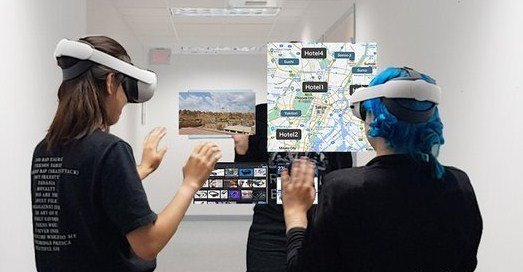Carnegie Mellon University (CMU) has announced the launch of a new campus-wide center that aims to boost research and development of augmented and virtual reality (AR/VR) technologies, and catalyze their adoption in industry and society at large. The Extended Reality Technology Center (XRTC) is a consortium of CMU faculty and partners from sectors including technology, health, entertainment, transportation, infrastructure, and government.
XRTC: A hub for AR/VR innovation
The XRTC sees extended reality (XR) as the core paradigm in which future societies will communicate, interact, and transact. XR includes any technology that allows for the information transfer between the physical and digital worlds, such as AR, VR, and mixed reality (MR). The XRTC has three main components: research, education, and community.
The research thrust brings together more than 250 faculty from multiple disciplines to tackle new topics in XR, such as human sensing, computer vision, machine learning, user interfaces, and content creation. The education thrust focuses on developing a new educational curriculum at all levels, including undergraduate, graduate, and general workforce development. The community thrust focuses on bringing new technology to the public’s attention, to encourage adoption and participatory design.
XRTC inaugural symposium
The XRTC held its inaugural symposium on Thursday, November 9, 2023, in the Gates-Hillman Complex (GHC), Room 6115, from 9:00 a.m. to 3:00 p.m. ET. The event featured research talks from CMU faculty and XRTC sponsors, a student poster session, and a panel discussion on “The Future of Communication in XR”. Breakfast and lunch were provided to the attendees.
The symposium showcased some of the cutting-edge projects and collaborations that the XRTC is involved in, such as:
- Virtual production: Using a 360-degree or dome-shaped LED wall, as seen in movies like The Mandalorian, to create immersive and realistic environments for filmmaking and storytelling.
- Human digitization: Using state-of-the-art sensing and reconstruction techniques to capture and model human appearance, motion, and behavior, for applications such as telepresence, social VR, and digital actors.
- XR for health: Using XR technologies to improve health outcomes, such as enhancing cognitive and physical rehabilitation, providing mental health support, and facilitating remote diagnosis and treatment.
Future facilities
The XRTC will be housed in the Carnegie Mellon University Robotics Innovation Center (RIC) at Hazelwood Green, opening 2025/2026. The RIC will be a 90,000-square-foot facility that will serve as a hub for robotics research, education, and entrepreneurship. The XRTC will have access to four main parts of infrastructure: large-scale capture space (LSCS), immersive experience studio (IXS), XR pods, and visitor space.
The LSCS will be an area of 50’ x 50’ x 20’, surrounded by a truss system. It will be equipped with state-of-the-art sensing for digitizing humans and the environment. The size will enable the development of novel technological approaches for sensing crowds and individual users, and a variety of motion ranges, from slow walking to sprints.
The IXS will be a space of 15’ x 15’ x 15’ and feature a 360-degree or dome-shaped LED wall, as used for virtual production. Additionally, the space will be equipped with sensing approaches for digitizing humans and objects.
The XR pods will be small rooms that can accommodate up to four people, and provide a variety of XR experiences, such as VR headsets, haptic devices, and spatial audio. The XR pods will be available for testing, prototyping, and demonstration purposes.
The visitor space will be an area that will showcase the latest XR technologies and projects from the XRTC and its partners. The visitor space will be open to the public, and will aim to inspire and educate the next generation of XR innovators.

